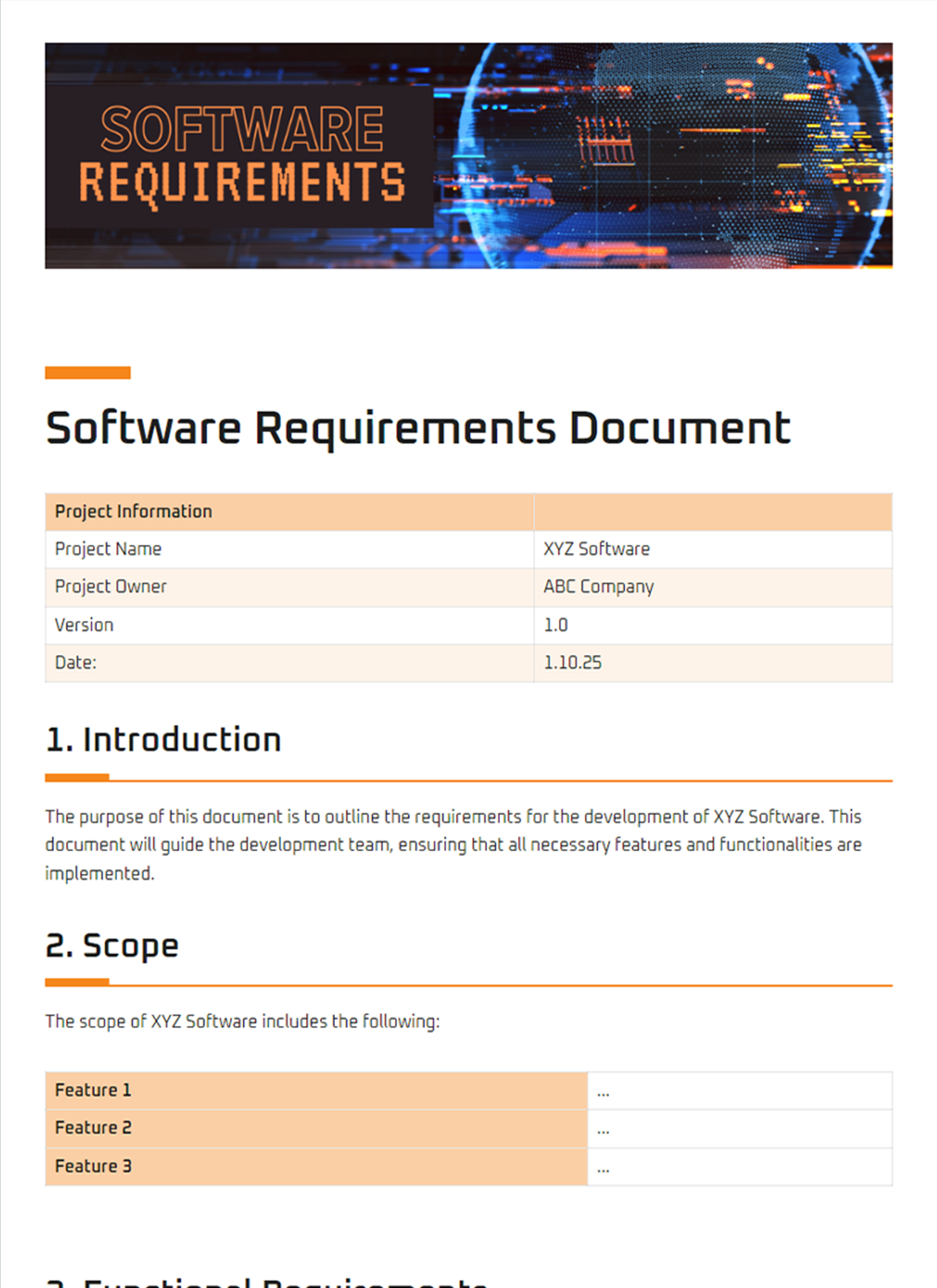Creating a comprehensive software project requirements template is crucial for ensuring the success of your software development project. It serves as a roadmap that outlines the specific goals, functionalities, and constraints that your project should adhere to. By providing a clear and detailed guide for your team, you can minimize misunderstandings, reduce errors, and increase the likelihood of delivering a product that meets the needs of your stakeholders.
Before creating a software project requirements template, it is essential to gather all relevant information. This includes understanding the business objectives, identifying user needs, and defining the scope of the project. By thoroughly understanding the project’s purpose and goals, you can create a requirements template that effectively captures the necessary details.

The Elements of a Software Project Requirements Template
A comprehensive software project requirements template typically consists of several essential elements:
- Project Overview: Provides an introduction to the project, including its goals, objectives, and scope.
- Stakeholder Analysis: Identifies the stakeholders involved in the project and their roles and responsibilities.
- Functional Requirements: Defines the specific functionalities that the software must deliver.
- Non-functional Requirements: Describes the performance, security, usability, and other non-functional aspects of the software.
- User Interface Requirements: Outlines the design and layout of the software’s user interface.
- Acceptance Criteria: Specifies the conditions that must be met for the software to be considered acceptable.
Benefits of Using a Software Project Requirements Template
Utilizing a software project requirements template offers numerous benefits, including:
- Improved Communication: Facilitates clear communication among team members and stakeholders by providing a shared understanding of the project’s requirements.
- Reduced Risk: Helps mitigate project risks by ensuring that all necessary requirements are captured and addressed.
- Increased Efficiency: Streamlines the software development process by providing a structured approach to gathering and organizing requirements.
- Improved Quality: Enhances the quality of the final software product by ensuring that it aligns with the specified requirements.
- Enhanced Customer Satisfaction: Delivers a software product that meets the expectations and needs of users and stakeholders.
In conclusion, creating a comprehensive software project requirements template is vital for successful software development. By gathering necessary information, identifying relevant stakeholders, and defining clear requirements, you can establish a solid foundation for your project. Using a software project requirements template helps improve communication, reduce risk, increase efficiency, enhance quality, and ultimately deliver a software product that meets the needs of its users.
To further enhance your software project planning, consider using a project management tool that provides pre-built templates and collaboration features to streamline the requirements gathering and management process.
